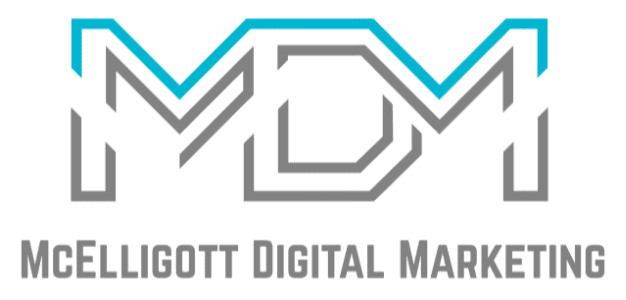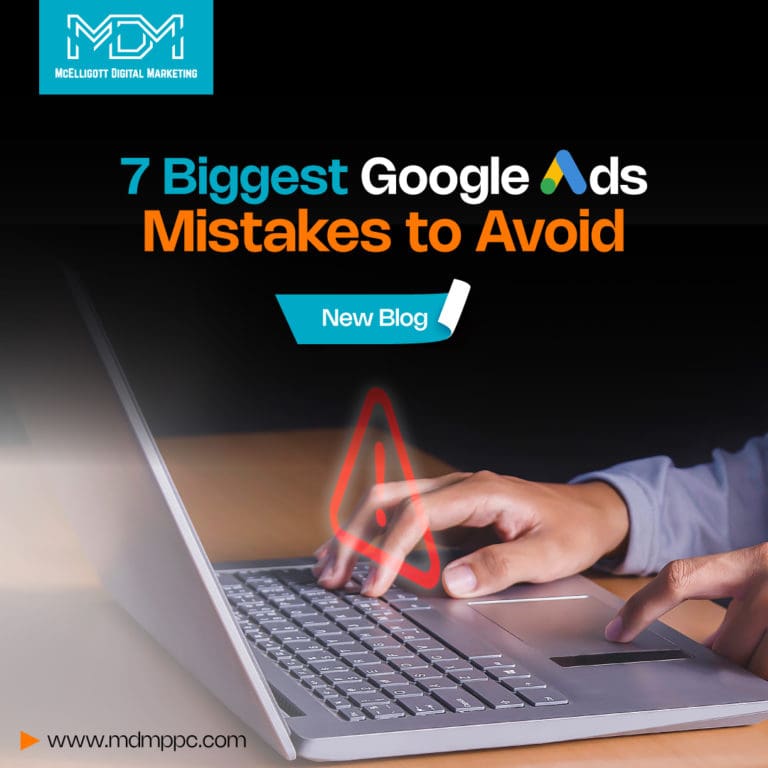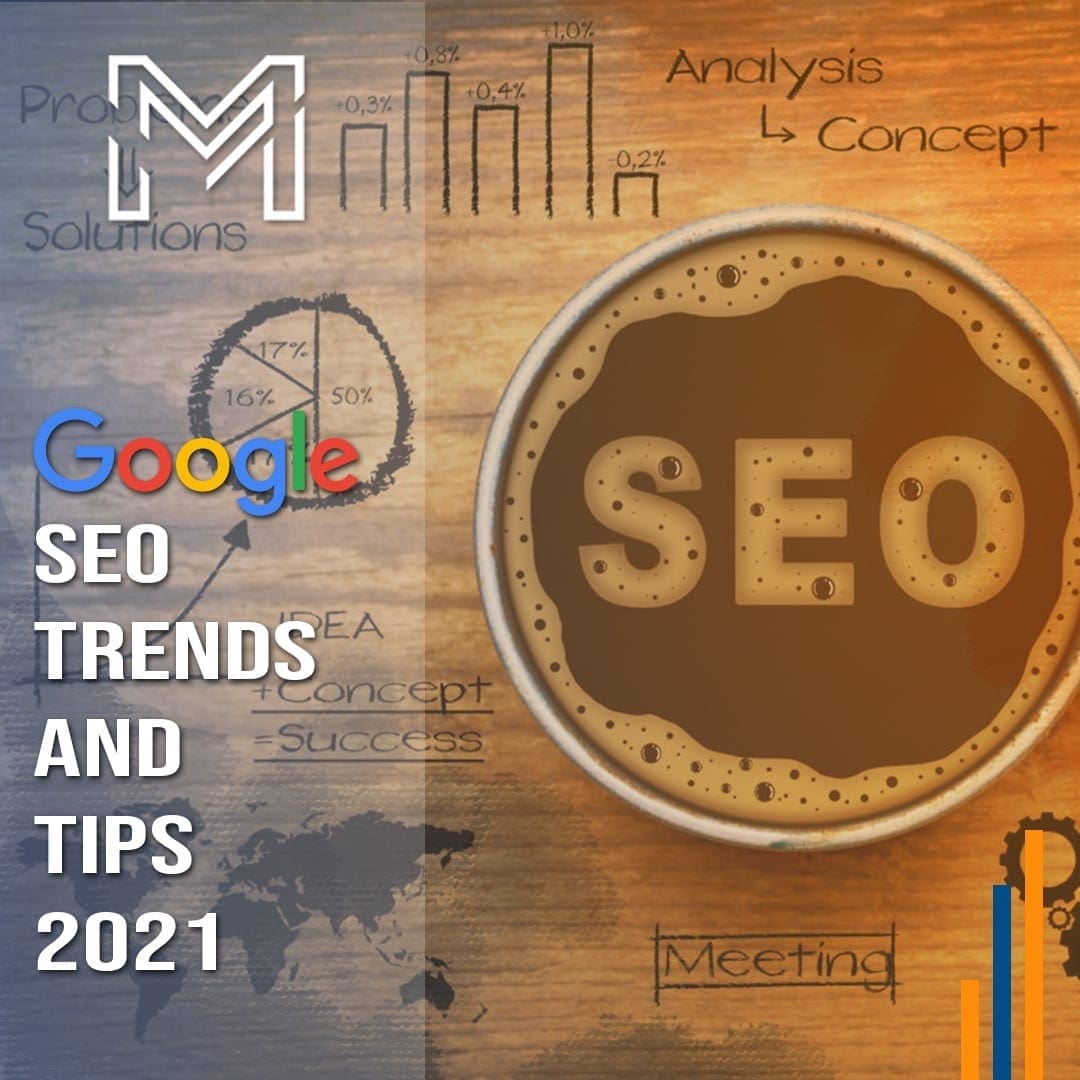Investing in Google Ads gives quick results in the form of leads, and brand building. But businesses sometimes end up draining their marketing budget in Google Ads.
Why?
It’s because of the mistakes that people make with Google Ads.
It’s a good idea to bring in a paid ad consultant to manage your Google Ads but businesses realize this only after losing a hefty sum.
If you are struggling to gain ROI from your Google Ads spending, and want to know why, keep reading this blog. Or you can talk to our Google Ads experts with years of experience in PPC and digital marketing now.
7 Common Google Ads mistakes and how to avoid them
1. Neglecting the power of keyword research and selection
One of the most common mistakes that businesses often make in their Google Ads campaigns is giving less importance to thorough keyword research and selection.
And this makes the clicks useless.
Keywords serve as the bridge connecting your ads to the right audience. Failing to invest sufficient time and effort into this crucial aspect can lead to a misalignment between your ads and the users you’re aiming to reach.
Improper keyword selection leads to displaying your ads to people who don’t want to buy your services.
Consider this scenario.
You run an online boutique specializing in high-end women’s shoes. And you launch a Google Ads campaign to reach fashion-forward shoppers who are looking for premium footwear. However, in your haste to get your campaign up and running, you choose broad keywords like “women’s shoes” without further refinement.
While this might seem like a logical choice, it can lead to your ads being shown to a wide range of users, including those who might be seeking general information about women’s shoes, researching different styles, or even looking for budget options.
As a result, your ads might be displayed to people who aren’t necessarily interested in purchasing high-end shoes, leading to clicks from users who have no intention of converting into paying customers.
Keyword research involves identifying the terms and phrases that potential customers are likely to use when searching for products or services related to your business.
Tools like Google’s Keyword Planner can provide valuable insights into search volumes and keyword competition.
If you’re not adequately researching and selecting the right keywords, your ads might show up for irrelevant searches, resulting in wasted ad spend and poor conversion rates.
To avoid this mistake, dedicate ample time to keyword research. Consider both broad and specific keywords to capture various stages of user intent.
Regularly review and update your keyword list based on performance data.
2. Do not ignore negative keywords! Read it again.
When it comes to Google Ads, precision matters just as much as relevance.
This is where negative keywords come into play. Neglecting the implementation of negative keywords can lead to your ads appearing in front of users who are not actually looking for what you offer. This can drive up your click-through rate without delivering meaningful results.
Negative keywords are terms that you can specify to prevent your ads from showing up when those terms are included in a search query.
For instance, if you’re selling luxury watches, you might want to add “cheap” or “affordable” as negative keywords to avoid attracting users seeking budget options.
Regularly monitoring and analyzing your search term reports is crucial for identifying irrelevant search queries that trigger your ads.
Consistently add these irrelevant terms as negative keywords to refine your targeting and ensure that your ads are seen by users who are genuinely interested in your products or services.
3. Crafting compelling ad copy and design
In online advertising, first impressions matter the most. Crafting compelling ad copy and designing eye-catching visuals is essential for capturing users’ attention and encouraging them to click on your ads.
A common mistake is creating generic ad copy that fails to differentiate your business from competitors. Your ad should succinctly communicate the unique value proposition you offer and address the specific needs or pain points of your target audience.
It’s not just about listing features. It’s about showcasing the benefits customers will experience by choosing your product or service.
Your ad’s design plays a crucial role in catching the eye and conveying your brand’s identity. Use high-quality images and consistent branding elements to create a visually appealing ad that resonates with your audience.
Ad copy and design are often the first touchpoints users have with your brand. Make them count by crafting a message that resonates and visuals that leave a lasting impression.
4. Ignoring ad extensions
In Google Ads, ad extensions are like adding extra layers of value to your ads. They provide additional information and options for users, enhancing the visibility and relevance of your ads. Yet, a common mistake is overlooking the power of ad extensions or simply not utilizing them effectively.
Ad extensions come in various forms, including site link extensions, callout extensions, structured snippet extensions, and more.
These extensions allow you to include extra information such as links to specific pages on your website, additional benefits or features, or even your business’s location and contact information.
If you’re not leveraging ad extensions, you’re missing out on opportunities to provide users with more context and options, which can ultimately lead to higher click-through rates and improved campaign performance.
Take advantage of the available ad extensions to enhance the value of your ads and provide users with the information they need to make informed decisions.
5. Landing page quality
Take an example. A user clicks on your enticing ad, excited about the solution you seem to offer. However, when they land on your website, they’re greeted with a confusing layout, irrelevant information, or a lack of a clear call to action. This is a prime example of the impact of neglecting landing page quality.
Your landing page serves as the bridge between a user’s interest and conversion.
It’s where you deliver on the promise made in your ad and guide users toward taking the desired action, whether it’s making a purchase, signing up for a newsletter, or requesting more information.
Neglecting landing page quality can result in high bounce rates, where users quickly leave your site without taking any meaningful action.
To learn more about how to create an effective landing page, ensuring it aligns seamlessly with your ad’s messaging, check our guide on crafting compelling landing pages. Keep the design clean, the content relevant and engaging, and the call to action clear and compelling
Regularly A/B test different landing pages and elements to determine what resonates best with your audience. A well-crafted landing page can significantly boost your conversion rates and the overall success of your Google Ads campaign.
6. Setting clear goals for campaign success
Success in any business begins with a clear understanding of what you aim to achieve. The same principle applies to Google Ads campaigns. Setting specific and measurable goals is essential for tracking your progress, evaluating your performance, and making informed decisions about your campaign strategy.
A common mistake is running Google Ads campaigns without defined objectives.
This lack of clarity can lead to inefficiencies, where you’re unsure whether your campaign is performing well or falling short of expectations. It’s like setting out on a journey without a destination in mind.
To avoid this mistake, establish clear goals for your Google Ads campaign.
These goals could include metrics such as click-through rates, conversion rates, return on ad spend, or even specific sales targets.
By having concrete benchmarks to measure against, you can assess the effectiveness of your campaigns and make data-driven adjustments as needed.
Regularly review your campaign metrics and compare them against your established goals. If you find that you’re not meeting your targets, you can delve deeper into your campaign data to identify areas for improvement.
Conversely, if you’re exceeding your goals, you can replicate successful strategies in future campaigns.
7. Continuous optimization
Imagine launching a Google Ads campaign and then simply letting it run without any further adjustments.
This is a mistake that can severely limit your campaign’s potential for success. Google Ads is not a set-it-and-forget-it platform. It requires ongoing monitoring, analysis, and optimization.
Failing to continuously optimize your campaigns based on real-time data is a common mistake that can lead to missed opportunities and wasted ad spending. Campaign performance can fluctuate due to various factors such as changes in user behavior, market trends, and even competitor actions.
If you’re not actively monitoring and adjusting your campaigns, you might be missing out on chances to improve your results.
Regularly review key metrics such as click-through rates, conversion rates, and cost per conversion.
Identify which keywords, ads, and targeting strategies are performing well and allocate more budget to those areas. Conversely, pause or adjust underperforming elements to minimize wastage.
A/B testing is a powerful optimization technique.
Experiment with different ad copies, landing pages, and targeting options to identify what resonates best with your audience. Small tweaks can sometimes lead to significant improvements in campaign performance.
How to avoid Google Ads mistakes?
When it comes to Google Ads, avoiding common mistakes can significantly impact the success of your campaigns. Implement the following strategies to stay on the right track and drive better results.
- Dive deep into keyword research to identify terms that resonate with your target audience’s intent.
- Avoid broad keywords that might attract irrelevant clicks and focus on specific, relevant keywords.
- Regularly review search term reports to pinpoint irrelevant keywords triggering your ads.
- Add these keywords to your negative keyword list to prevent wasteful ad spend.
- Craft ad copy that directly communicates your value proposition and entices clicks.
- Utilize ad extensions to provide additional information and improve ad visibility.
- Ensure your landing page aligns seamlessly with your ad’s promise.
- Keep the content relevant and the call-to-action clear to boost conversion rates.
- Set specific campaign goals, such as click-through rates, conversion rates, or sales targets.
- Regularly monitor performance metrics and adjust your campaign to meet these goals.
- Constantly review campaign data to identify trends and opportunities.
- Test different ad elements, keywords, and targeting options to refine your approach.
- Stay updated with industry trends and changes in Google Ads algorithms to adjust your strategies accordingly.
Should you hire a Google Ads consultant to drive revenue?
A Google Ads consultant is an expert, either an individual or a company, available for hire to provide assistance in promoting your business through Google’s search platform.
Paid ads consultants hold Google Ads certifications, which show their proficiency in navigating the intricacies of Google Ads. Certain consultants might hold distinctions as Google Partners or Google Premier Partners, signifying their extensive experience and adeptness in working with Google Ads.
Engaging a Google Ads consultant offers a range of concrete advantages that can boost your company’s success.
1. Access to specialized expertise-
Partnering with a Google Ads consultant grants you access to a professional well-versed in the intricate workings of the platform.
Our team of Google Ads experts have years of industry experience which enables them to craft effective ad campaigns that drive conversions.
They also diligently monitor key metrics to ensure the sustained performance of your ads.
2. Improved efficiency in budget allocation–
A Google Ads consultant helps you optimize your advertising budget by making informed decisions about resource allocation.
Their strategic insights can lead to higher ad ranks, allowing you to maximize the impact of your budget and achieve more leads.
3. Stay current with market trends–
Google Ads consultants specialize in advertising, which means they stay updated with the latest trends and shifts in the market.
This knowledge enables them to refine your ad strategies, ensuring they remain effective in an ever-evolving landscape.
4. More focus on core business operations-
Enlisting the services of a Google Ads specialist allows you to dedicate more time to other critical aspects of your business.
Whether it’s nurturing client relationships, refining products, or exploring new opportunities, you can concentrate on growing your core operations while your ad campaigns are managed by experts.
Schedule a free consultation with McElligott Digital Marketing
Investing in Google Ads consulting is a strategic move.
By entrusting your campaigns to the hands of professionals, you position your business for increased visibility and growth within the expansive realm of Google Ads.
Need a consultation with our Google Ads experts?





